|
People are critical to construction companies. Motivated workers are essential.
Check out this great article. THE WARNING SIGNS OF A DEMOTIVARED WORKFORCE
0 Comments
"Poor subcontractors will negatively impact construction projects." A poor subcontractor can harm your construction project, affecting the construction schedule, project safety, client relations, quality, and often costing the main or general contractor additional money. It's therefore essential that contractors and clients go through a rigorous process when selecting a subcontractor. #subcontractors #constructionmanagement #constructionprojects What to consider when selecting subcontractorsSome items to consider when selecting subcontractors include:
Subcontractors are your partnersNever select subcontractors on price alone. Regrettably the cheapest subcontractor often works out to be a very expensive choice when the subcontractor does not perform. Do careful due diligence to ensure that your subcontractors have the experience, knowledge, and resources to do the construction work in their contract. Paul Netscher has written several easy to read books for owners, contractors, construction managers, construction supervisors and foremen. They cover all aspects of construction management and are filled with tips and insights.
Visit to read more. The books are available in paper and ebook from most online stores including Amazon. © 2022 This article is not to be reproduced for commercial purposes without written permission from the author. Have you worked for a bad client? Perhaps they paid you late, or not at all? Maybe they expected you to do extra work for free? Unfortunately there are some clients who you should never work for. They will cost you time and money, and perhaps even damage your reputation. No matter how desperate you are for work do not be tempted to do a construction project with a bad client. Always research your clients before pricing a project. Know who your client is. #constructionprojects What makes a good construction client?A good client is one that:
Other useful articles Your tender submission or quotation – Get it right Steps to help you win your next construction project Asking questions in the bidding process Paul Netscher has written several easy to read books for owners, contractors, construction managers, construction supervisors and foremen. They cover all aspects of construction management and are filled with tips and insights. Visit to read more. The books are available in paper and ebook from most online stores including Amazon. © 2022 This article is not to be reproduced for commercial purposes without written permission from the author. Planning your construction project is probably the most important part of the project management process. When I say planning I’m not just talking about preparing the construction schedule or program which is an important part of the planning process. I’m talking about developing the overall construction methodology, deciding how you going to build it, who you going to use, what equipment will be needed and what materials will be used.
Many problems encountered during construction are a result of poor planning. Spending more time on planning the project can often result in a faster and smoother construction process. Proper planning can improve safety, quality and resource utilisation. "Too much profit and you won't win the project. Too little and you've left money on the table." You are about to submit your construction project quotation (tender, bid, or price) and you have to decide how much profit to add to your price. Add too much and your price may become too expensive and won't be considered by the client. Add too little and you could be much cheaper than your competitors. So what is the right profit? What impact the profit you add on construction projectsThe amount depends on a number of factors including:
Adding the right amount of profit is one of the most important decisions in the project pricing process.
© 2022 This article is not to be reproduced for commercial purposes without written permission from the author.
Why is your construction project unprofitable?There are many reasons for construction projects to lose money, and often more than one for a particular loss. Some reasons may be:
Why clients cost contractors moneyOf course sometimes the reasons are because of the client, in which case it's important that the contractor notifies the client, claims for the delay, changes, or additional scope, and assists the client to rectify the problem. 15 Rules for construction variation claims and change orders When can contractors claim extra costs? Some reasons the client is causing the contractor extra costs may be:
Occasionally the problem is due to a mistake in the project price in which case the estimator should be told so the same mistake doesn't occur on the next tender. #constructionprojects #constructionmanagement #contractors Your Construction Project is in Trouble – Who are you Going to Blame? Information in this article is from Paul Netscher's construction management books all available on Amazon and from other online stores. © 2022 This article is not to be reproduced for commercial purposes without written permission from the author. Two weeks ago my father died. My mother had died two years earlier and my father had been less than communicative with my brothers and I about his personal affairs, so trying to sort his things out after he died wasn’t easy. Fortunately he had given the church instructions on how his memorial service should be conducted. His financial advisor seemed to have his financial affairs under control. However, one of the biggest problems we had was finding out who his friends were and how to contact them to inform them of his death. There were five different lists of contacts and we didn’t know whether they were his or my mother’s friends and who was still living. Many had changed their telephone numbers and we couldn’t contact them. This reminded me how important it is for Project Managers to keep records on site. As a Project Director I have on occasion had to step in on a construction project when a project manager has been suddenly taken ill or had to attend to urgent personal business. It’s often been frustrating trying to find who to contact and which suppliers and subcontractors were being used on the construction project. #constructionmanagement #constructiondocumentation "Project information on computers and phones must be accessible to the company" In this day and age project managers have their own laptop computers, tablets and smart phones, and it can be even more frustrating since all the project information is often stored on these devices which travel with the project manager. It’s therefore important that the construction company has systems in place whereby information on these devices is regularly backed-up onto the company’s central computer system so that it can be retrieved by someone else should the project manager be unavailable. The information should also be stored in a standard system of files and folders so that information can be easily found. "Ensure the next project manager has access to all the project information" It’s important that project managers give a full set of handover documentation to project managers who are relieving them while they are away on leave. Sometimes construction projects work double shifts and there is a project manager on duty for each shift. Again it’s vital that they handover sufficient documentation to the incoming project manager so they know what work was done in the previous shift and what they need to do during their shift. "A comprehensive and up to date set of project documents is invaluable." If the construction project has a full set of records which are easily accessible, and the project manager prepares a comprehensive set of handover documentation, then the transition from one project manager to another can be fairly seamless. See also Documents That Will Make Your Construction Variation Claim Successful Paul Netscher has written several easy to read books for owners, contractors, construction managers, construction supervisors and foremen. They cover all aspects of construction management and are filled with tips and insights.
Visit to read more. The books are available in paper and ebook from most online stores including Amazon. |
Archives
June 2024
Note: We welcome genuine comments, especially comments that add additional information to the subject matter in the article. We however reserve the right to remove inappropriate comments, which includes comments that have nothing to do with the subject, comments that include inappropriate language, and comments that are an advertisement for a product or company, or which include an advertising link. Comments must be in English. We will not enter into discussion on why a particular comment was removed.
CategoriesCopyright 2016 - The attached articles cannot be reproduced for commercial purposes without the consent of the author.
The opinions expressed in the attached articles are those of the writer. It should be noted that projects are varied and different laws and restrictions apply which depend on the location of the contractor and the project. It's important that the reader uses the supplied information taking cognisance of their particular circumstances. The writer assumes no responsibility or liability for any loss of any kind arising from the reader using the information or advice contained herein. "I have what I consider some of the best books on construction management."
Books are available from: Amazon.com Amazon.co.uk takealot.com kalahari.com Amazon.in Amazon.de Amazon.fr Amazon.it Amazon.com.au Powell's Fishpond uread bokus Amazon.ca Amazon.es Other retail stores Available in paperback or on Kindle "28 YEARS OF CONSTRUCTION PROJECT MANAGEMENT EXPERIENCE, DEVELOPING SUCCESSFUL CONSTRUCTION PROJECT MANAGERS AND BUILDING SUCCESSFUL CONSTRUCTION COMPANIES"
|
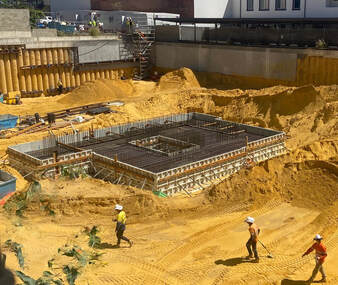

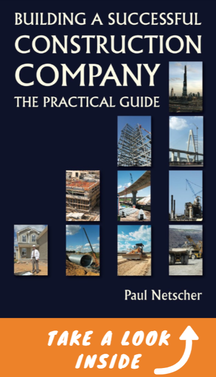

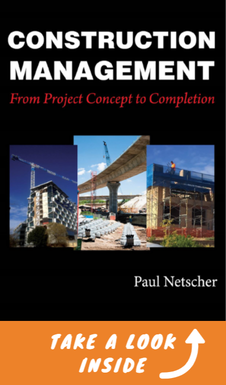
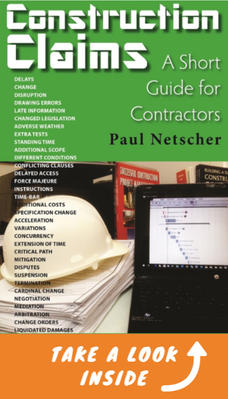
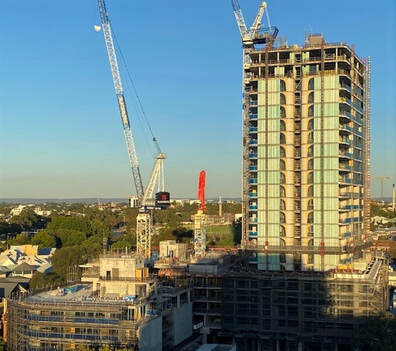




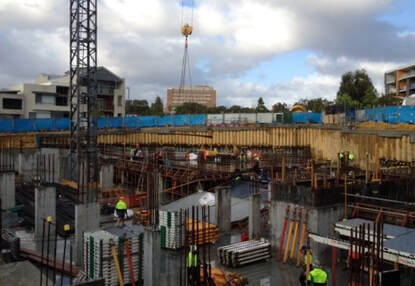




 RSS Feed
RSS Feed




